Quarantine gardens big and small
I got a lot of feedback from my initial series on quarantine gardens, so this week we look at three more. These gardens, located in Laguna and Cavite, range in size from small (bonsai), to medium, and then a large garden set in an even larger landscape in Lipa.
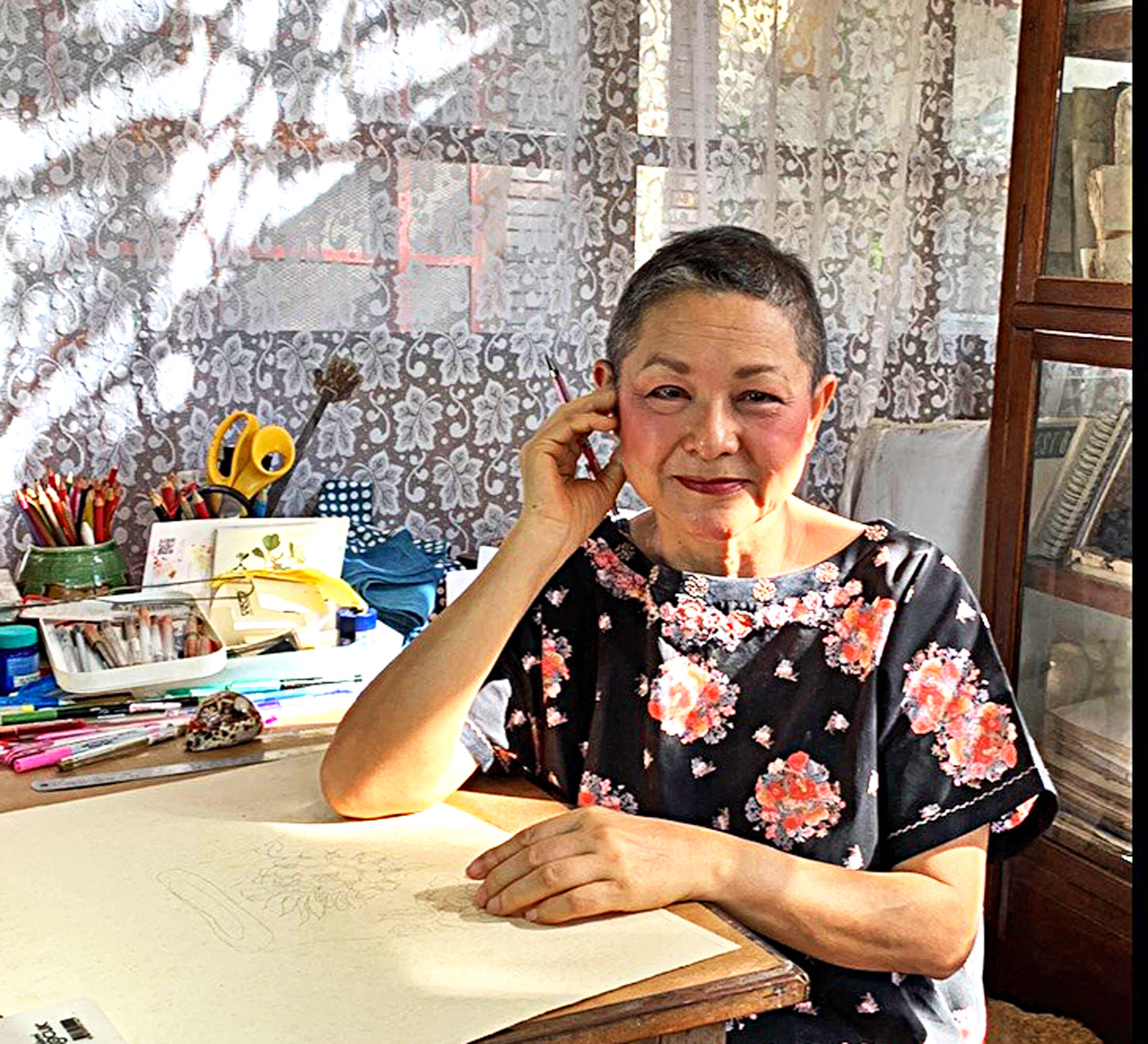
Patis Tesoro, culture maven
We start with Patis Tesoro’s paradise outside San Pablo City. She moved here permanently a few years back after selling her home in San Juan. Here she has her shop (she is a champion of local weaves and garments), and a reservations-only B&B and restaurant, along with her lovely garden.
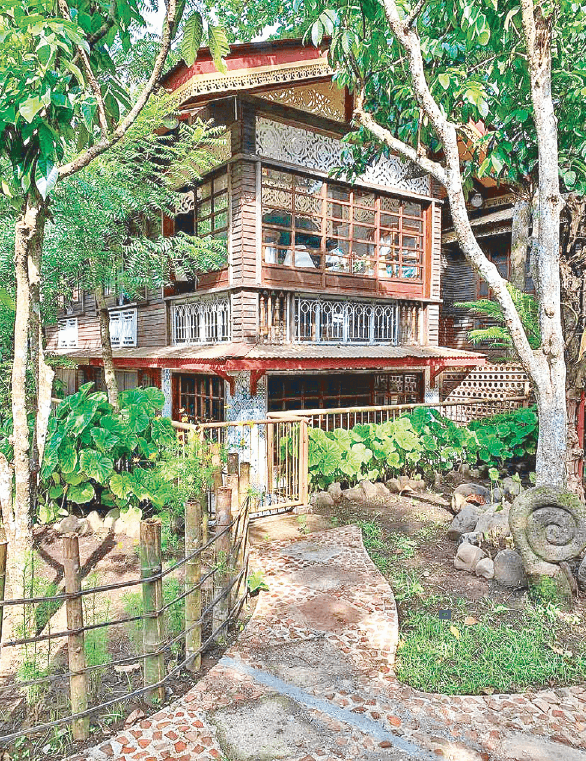
How big is your place, Patis?
Patis Tesoro: It’s about three hectares and I have over a thousand fruit trees of rambutan, lanzones, bananas and coconuts.
What else do you grow here?
I have a permaculture garden where we plant vegetables and horticultural plants with trees around the perimeter. We don’t get all our vegetables here, as some vegetables need a lot of sun, like onions. Together with my grandson Enzo (who studied horticulture at UP Los Baños) we are 100 percent organic. We use natural fertilizer from plants, animal waste like chicken and pig poo, and we also practice vermiculture.
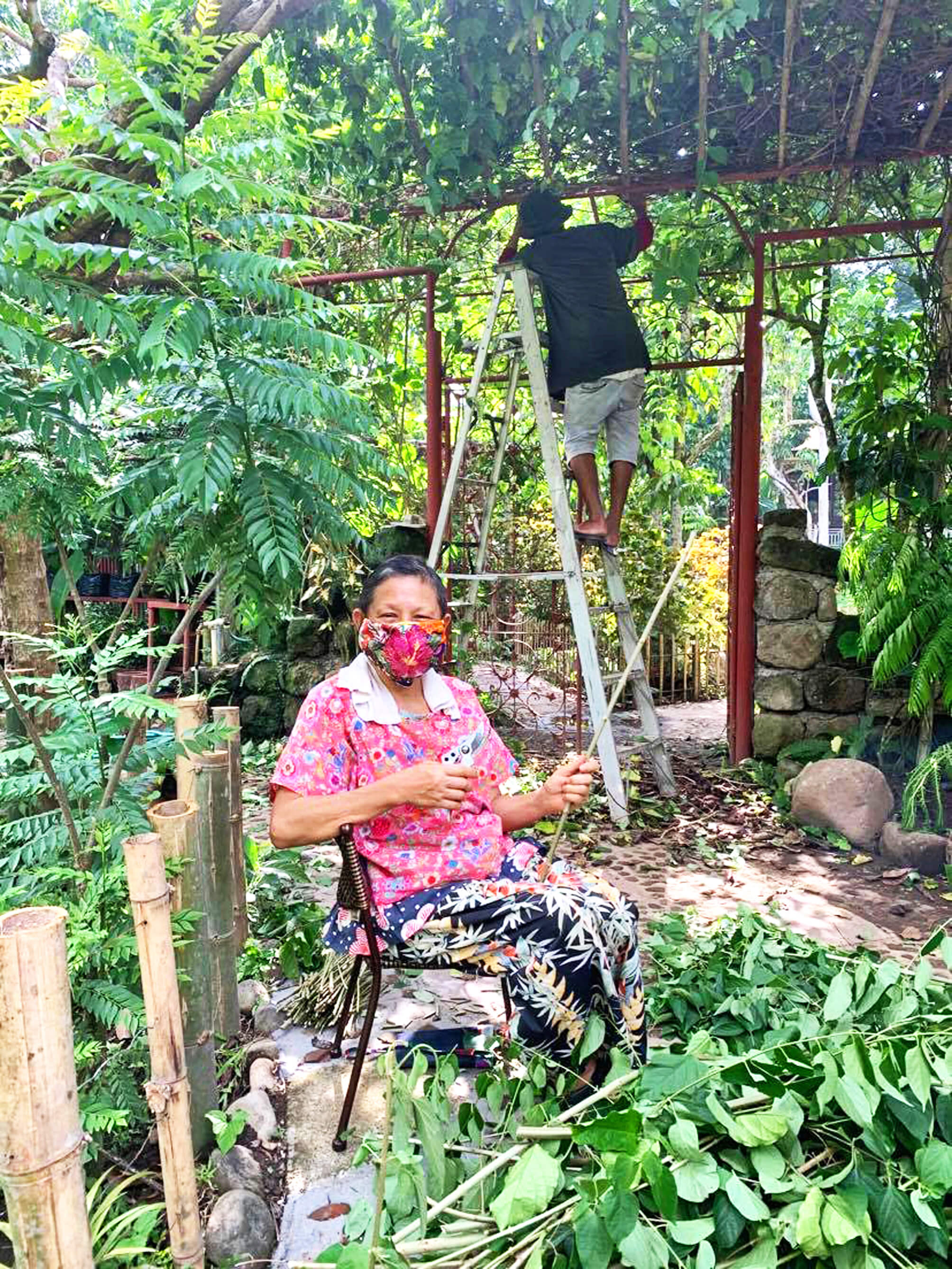
How much time do you spend in your garden?
We are in the garden every day and basically follow a farmer’s schedule of early to rise and early to bed.
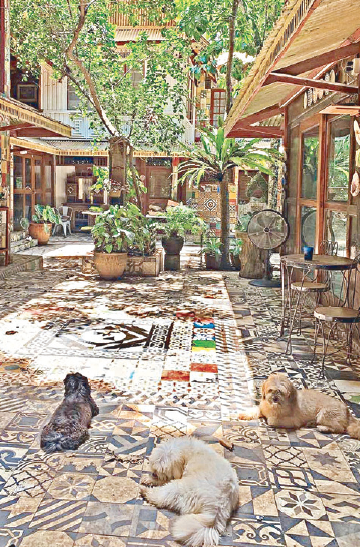
How would you describe your lifestyle there and how has your garden helped?
My vision is to live in a healthy environment with a simple lifestyle, which our forefathers lived before this frenetic way of living where money and ambition is the end-all. My garden has stabilized my diabetes. I don’t take sleeping pills or downers. I heartily recommend this alternative during and after this pandemic.

Cristina Turalba, architect and conservationist
Next we drop by the garden of architect and planner Maria Christina V. Turalba. Cristina was just received the 2020 Gawad CCP Para sa Sining Award for Architecture.
Tina, together with her husband, the architect and developer Tony Turalba, are in quarantine in the picturesque setting of the Mt. Malarayat Golf and Country Club. This enclave, located just outside Lipa City, is their creation and was completed in the late 1990s. The course and its lush landscape (by IP Santos and PDAA Partners) have matured to provide a fantastic setting for their private garden.
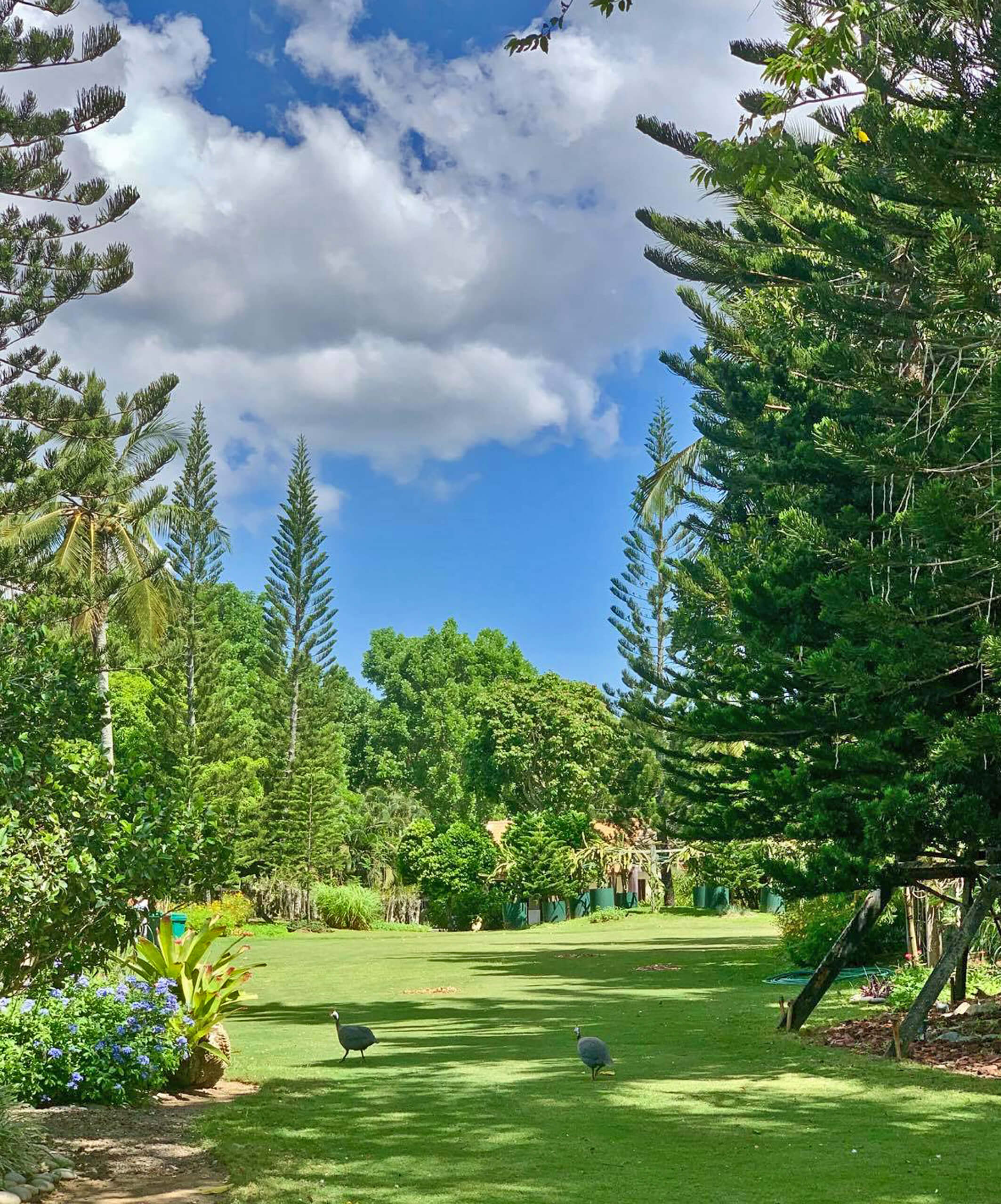
Paulo Alcazaren: What does your garden look out on?
Cristina Turalba: It looks over the lush golf fairways (Malarayat has been named by Golf Digest as one of the world’s top 500). The whole L-shaped property is framed by pines, ylang-ylang, mangoes, chico, rambutan, jackfruit, and atis.
What do you grow for your kitchen?
We have kamote, kangkong, pechay, mustasa, papaya, okra, ampalaya, tomatoes and luya.
What are your favorite plants?
I love our Palawan cherry blossom trees that survived the last typhoon and blooms yearly. I am fond of my Chinese Hair-Flower bushes and red palms (a gift from good friend Doreen Yu). I also enjoy flowers of rosal, jasmine, and native orchids.
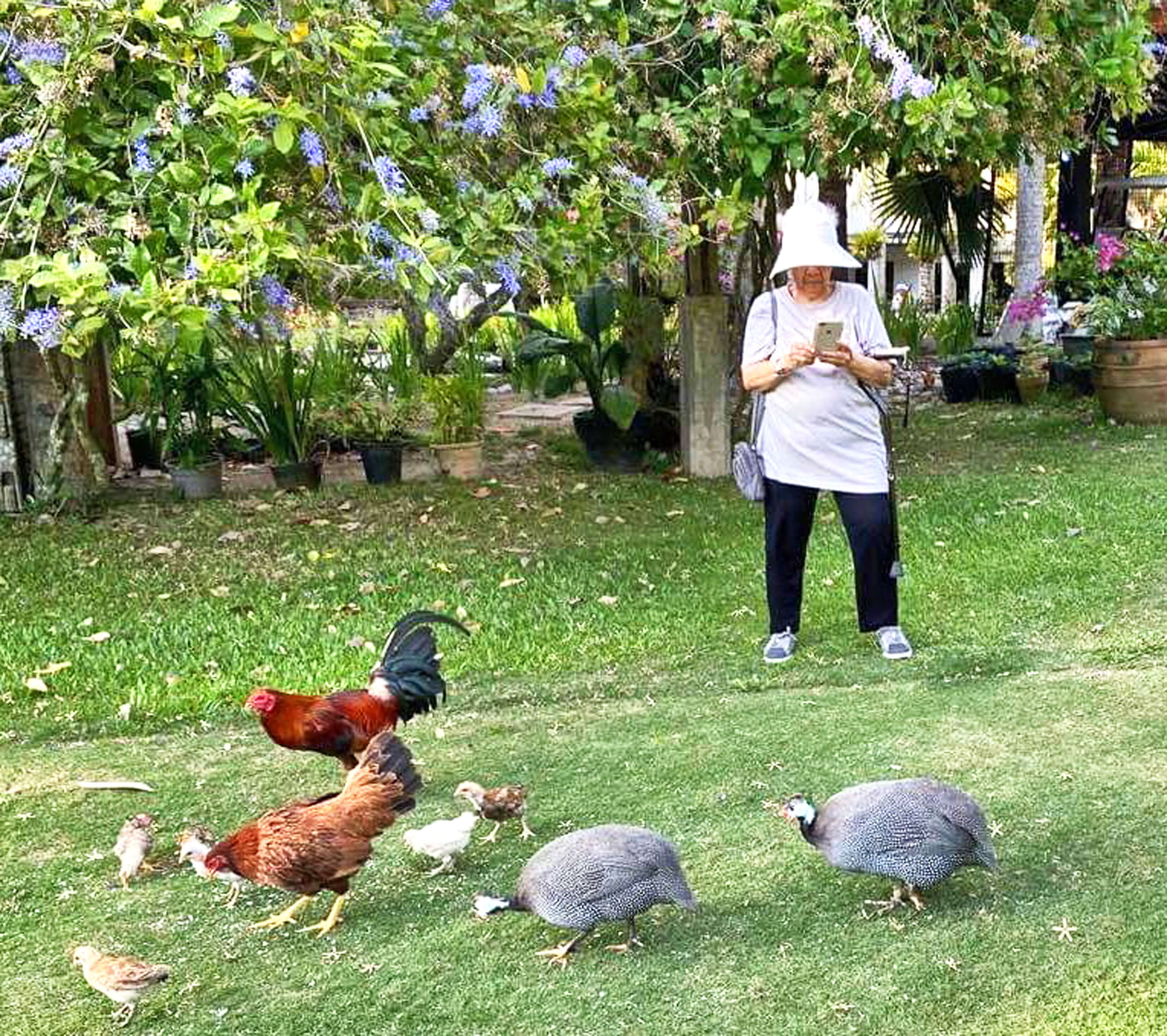
I notice chickens and pheasants running around in your garden.
Some are ex-cock-fighting chickens from my brother that have tamed down over the years. The pheasants are allowed only to roam early in the morning.
How often are you in your garden?
I’m out in the early morning and late afternoon when there is no rain.
How is life in quarantine at Mt Malarayat?
It is calming here, the air is clean, and we have everything we need. The course is actually open to members and strict protocols for social distancing are implemented for both the course and the residential area.
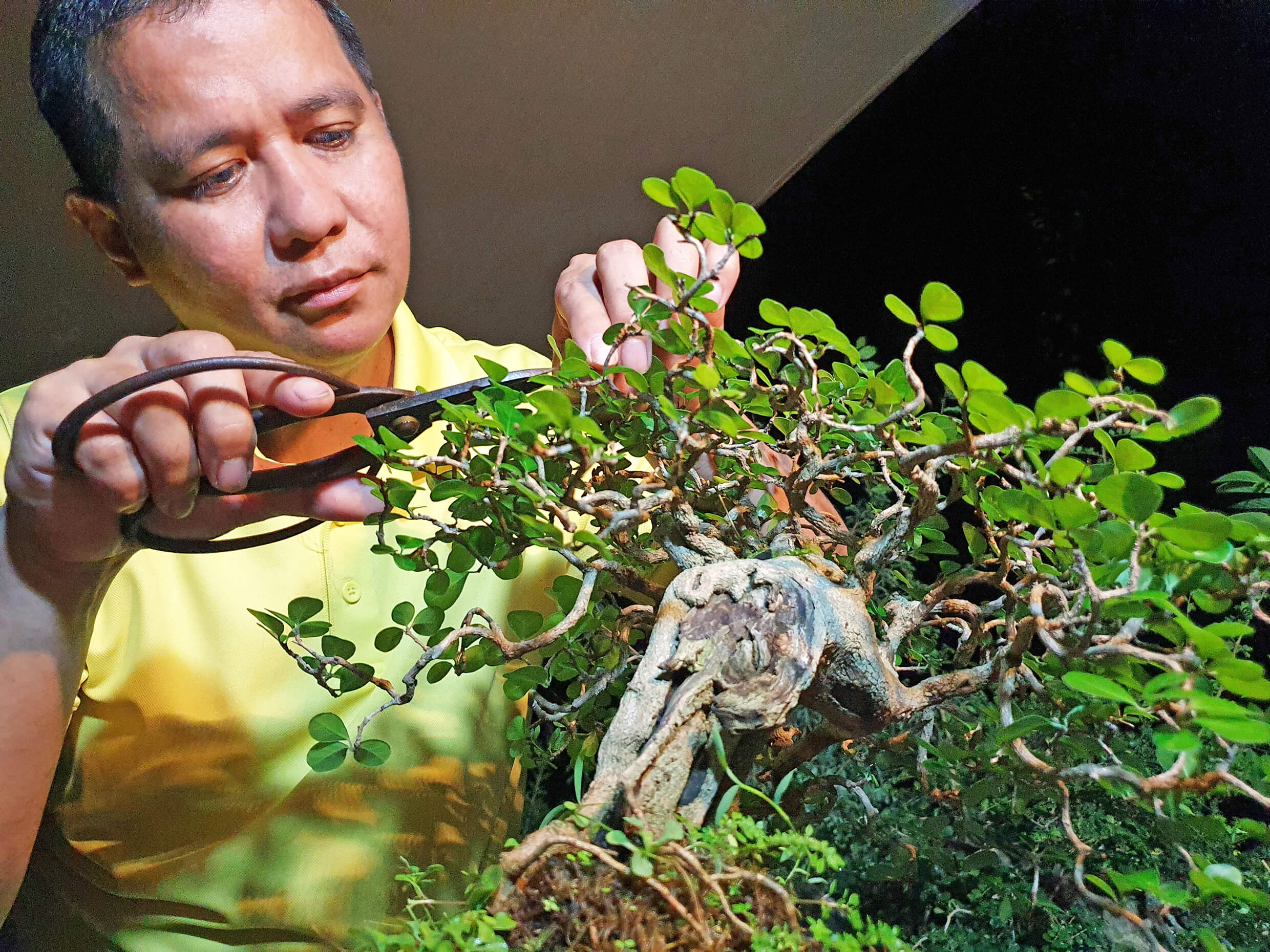
Vic Dul-Logg, landscape architect and bonsai guy
Finally we visit Vic Dul-Loog, former president of the Philippine Association of Landscape Architects in Cavite. Although professionally he designs large, sprawling landscapes, public parks and resort grounds, his passion is actually for greenery on a smaller scale. His hobby is bonsai.
How did you get into bonsai and how long have you been doing it?
Vic Dul-Logg: A relative gave me a book on bonsai when I was in college. I developed an interest but did not get deeply into it until a decade ago.
What are your favorite species?
My current materials nearing the fourth-generation branches are actually the most popular, like sampaloc, alagao, hibiscus, and kamuning. My favorite is the bluebell (Desmodium sp).
How long do you spend doing this hobby?
During weekends, I spend almost the whole day in the garden but not only with my bonsai. I have my edible garden; my daughter started her strawberry and herb garden, while my son tends the tomatoes and the fish in our “aquaponics” system.
How big is your bonsai garden?
I have around 100 bonsai trees and materials in micro, mame, shohin and medium sizes (up to 24" max height). I started to add native trees and shrubs in training, such as balai lamok, tambis, hagis, amugis, sampinit.
How has bonsai helped you cope with this quarantine?
Like most bonsai enthusiasts, I’m happy to have time to spend on my trees. The bonsai online community is alive and bustling with activities, exchanging techniques, online classes and they even have competitions. Bonsai is not everyone's cup of tea. It takes a lot of patience and hard work. Since a bonsai tree’s growth does not stop, this gives the enthusiast something to look forward to. This is no different from my professional landscape projects, which are very dynamic and change with time.
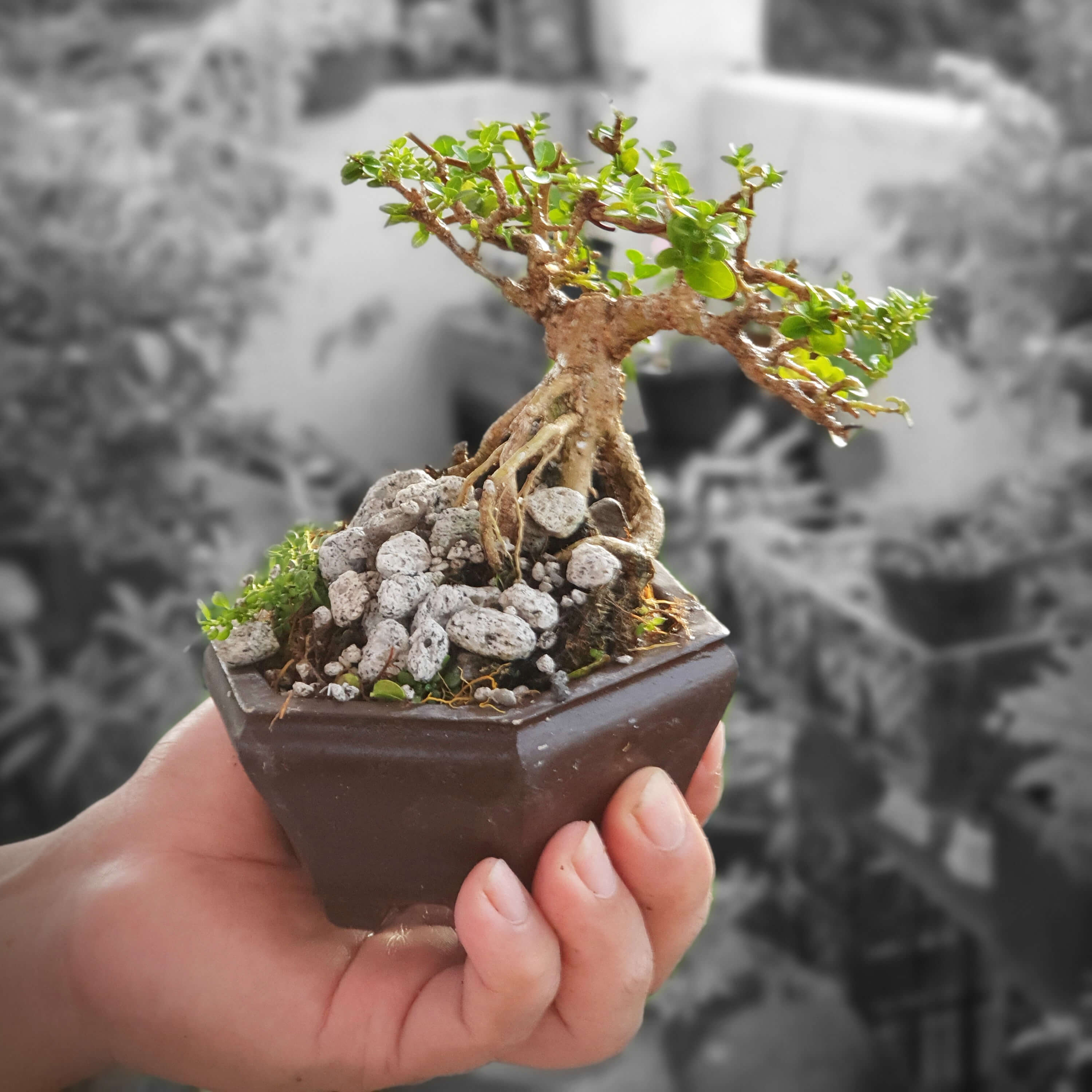
No matter what size your garden is, tending to plants and spending time in a garden will help you and the rest of the world stay safe and in good health.
(Feedback is welcome. Please contact the writer at paulo.alcazaren@gmail.com.)


